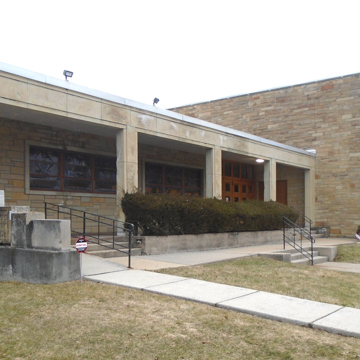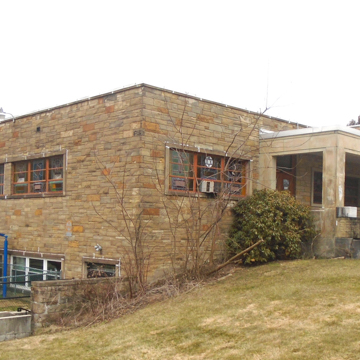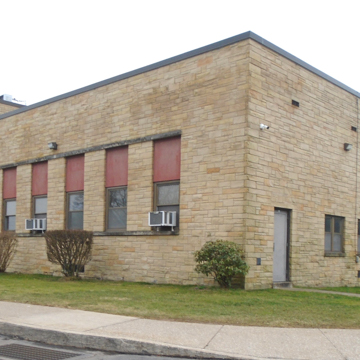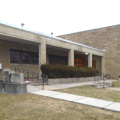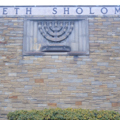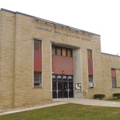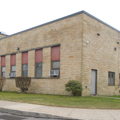Jewish settlers first came to Johnstown in the early 1850s, when the Cambria Iron Company opened and merchants were needed to serve the community. Since 1905, Orthodox, Conservative, and Reform congregations have all built synagogues here. In 1950, two synagogues were built for the Beth Zion (Reformed) and Rodef Sholom (Conservative) congregations in Westmont. Both congregations followed their members to the suburbs, and both synagogues were designed by Alexander Sharove (1893–1955) of Pittsburgh. The combined synagogue Beth Sholom uses the former Beth Zion building, while the Rodef Sholom at 100 Dartmouth Avenue is now the Ferndale Elementary School. Sharove's two buildings are flat roofed, and the horizontally laid stone of the walls is emphasized rather than the windows. At this synagogue, exterior decorative elements are restricted to a smooth stone cornice and a stone menorah frieze on the facade. The windows by artist A. Raymond Katz depict scenes of Jewish holidays.
You are here
Beth Sholom Synagogue
If SAH Archipedia has been useful to you, please consider supporting it.
SAH Archipedia tells the story of the United States through its buildings, landscapes, and cities. This freely available resource empowers the public with authoritative knowledge that deepens their understanding and appreciation of the built environment. But the Society of Architectural Historians, which created SAH Archipedia with University of Virginia Press, needs your support to maintain the high-caliber research, writing, photography, cartography, editing, design, and programming that make SAH Archipedia a trusted online resource available to all who value the history of place, heritage tourism, and learning.





















